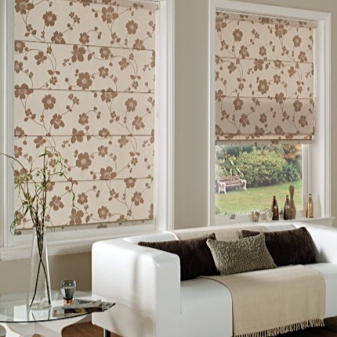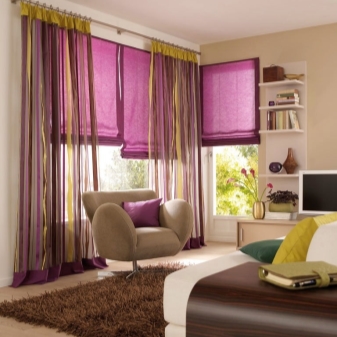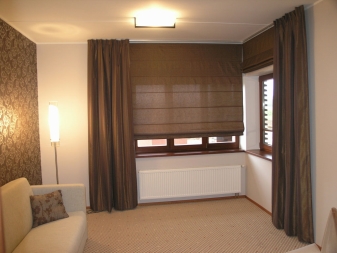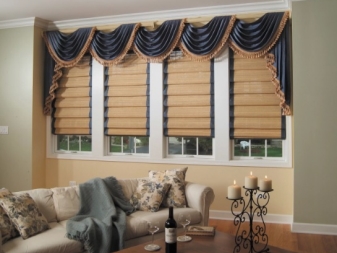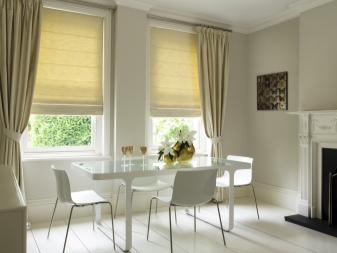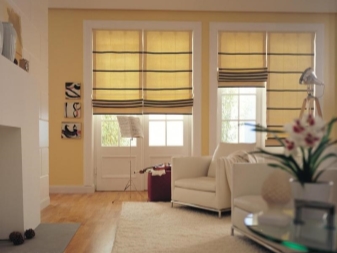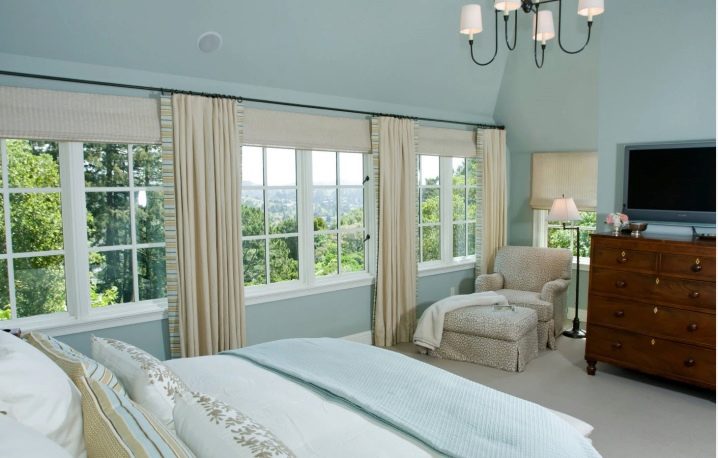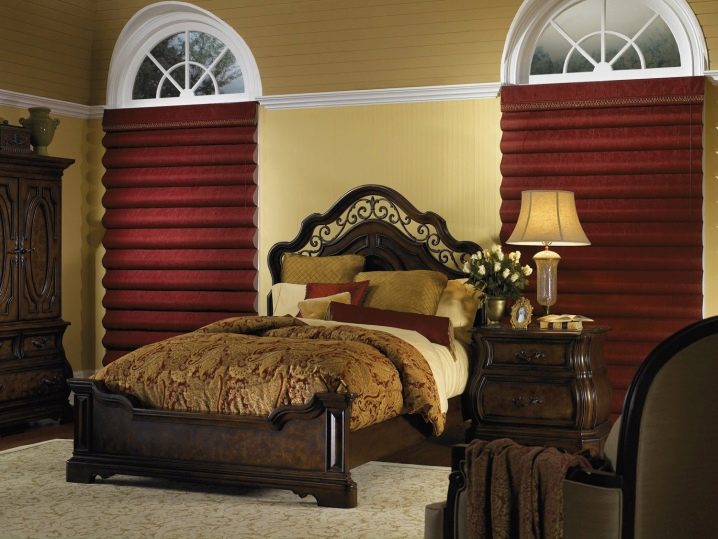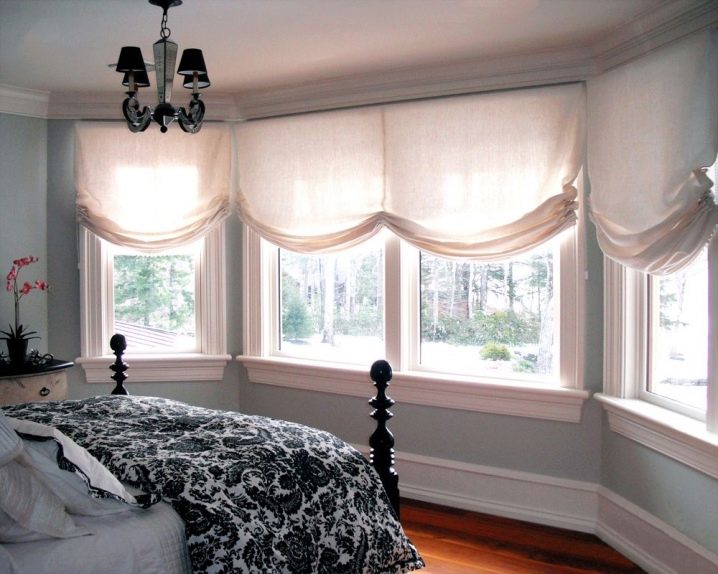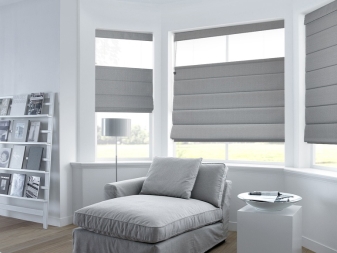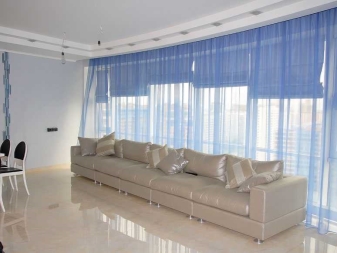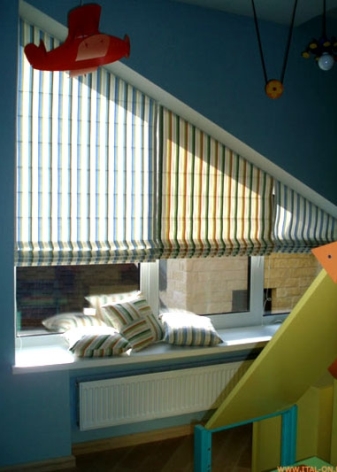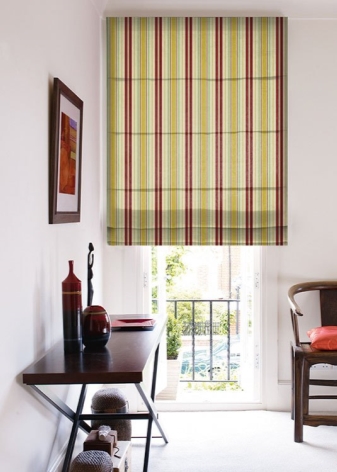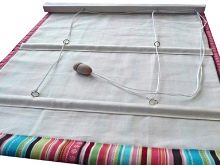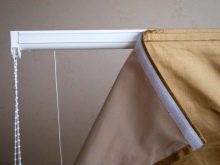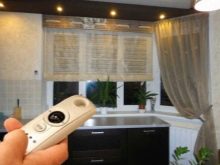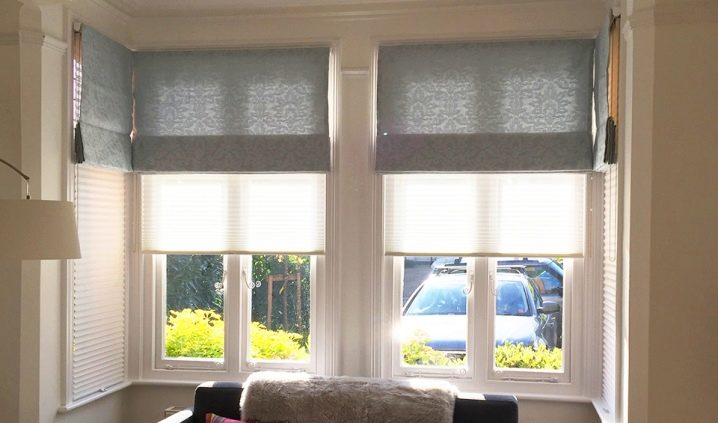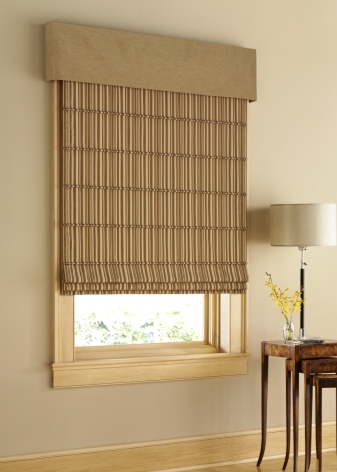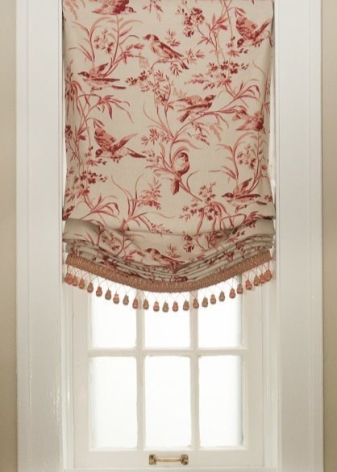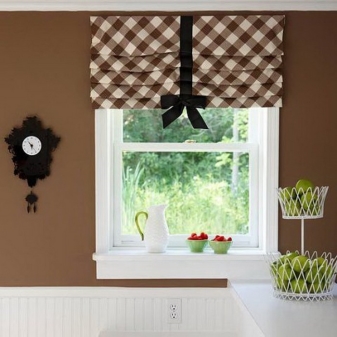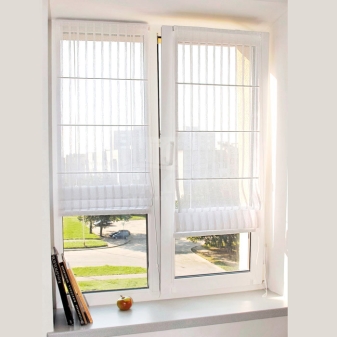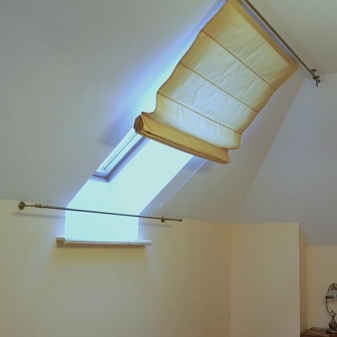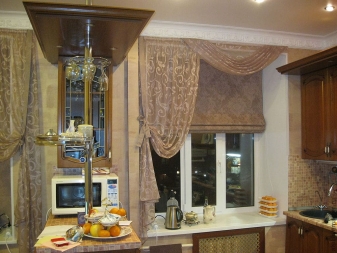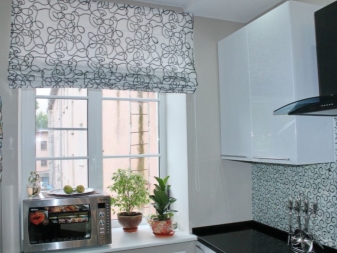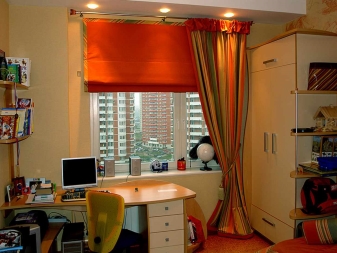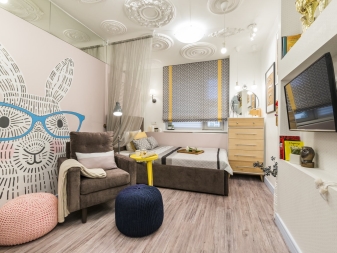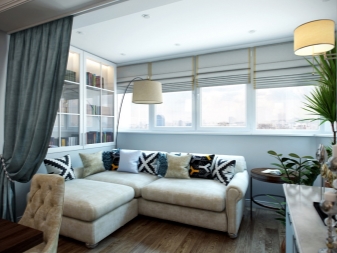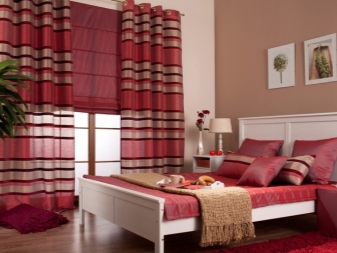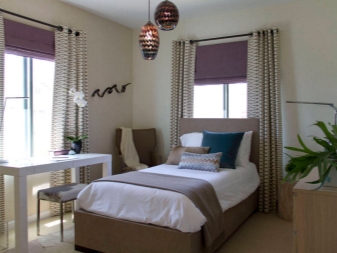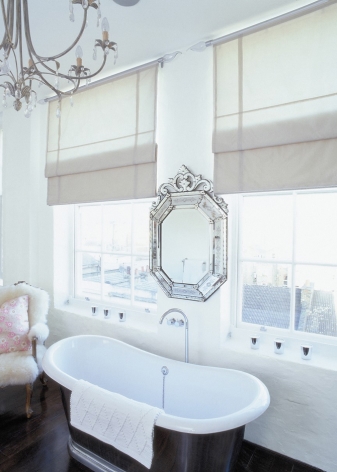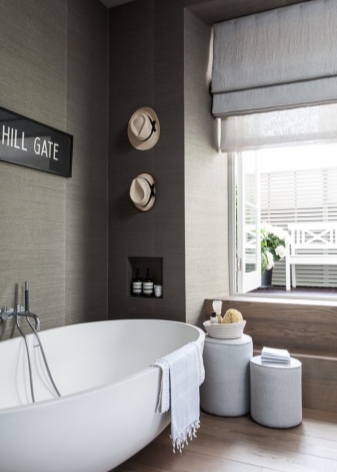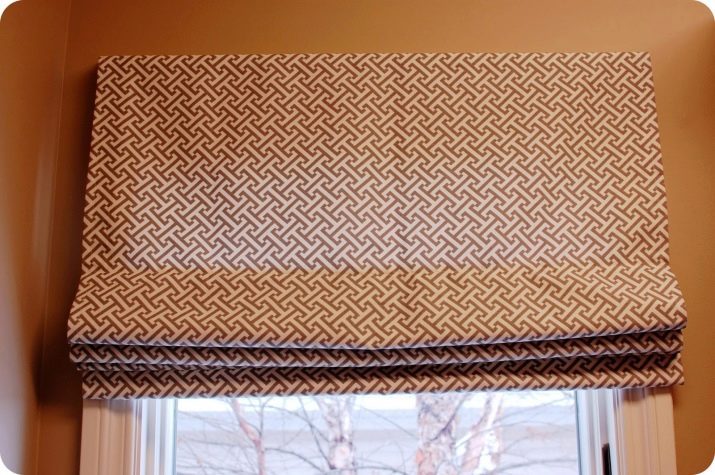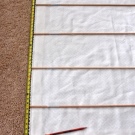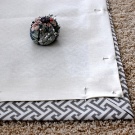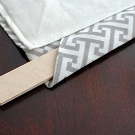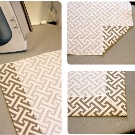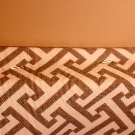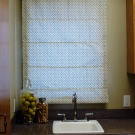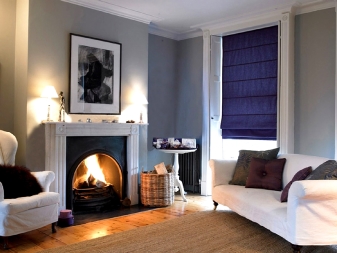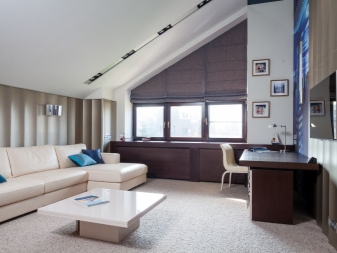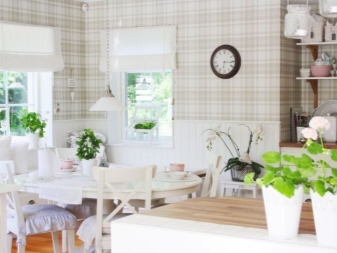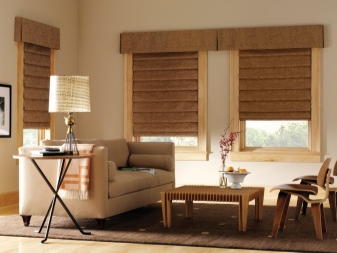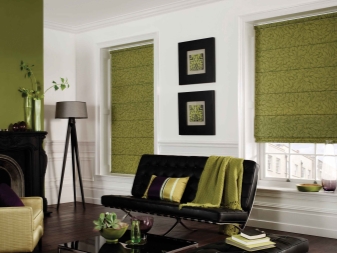Eaves for the Roman curtains
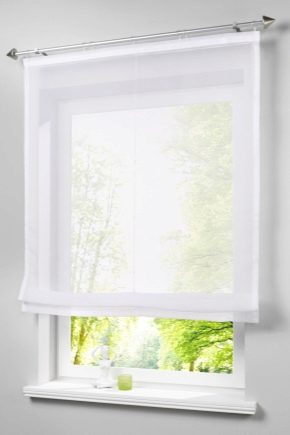
Every detail in the interior design is important: furniture, wall decoration, decorative elements and curtains. Only with the harmonious combination of all the elements can you create a cozy and comfortable atmosphere. Properly selected textile window decoration completes the interior composition and makes the room design more stylish.
Curtains - an important element of home interior. With their help, you can diversify the design of the room, make it original and demonstrate a sense of style with the owner. But before you start buying products, you need to decide on the role that the curtains will have to perform in the room.
Special features
Roman curtains are ideal for home, they are not only very practical and functional, but at the same time easy to maintain and occupy a minimum of space in the interior.It is rather simple to enter the Roman curtains in any type of design of the room. For example, for modern decors they will look great in their original form, and in classical directions you can combine Roman curtains with light curtains and traditional curtain models.
The design of the Roman curtains is at the same time a very original and very simple mechanism that allows you to change the length of the canvas with one hand movement.
The main advantages of Roman blinds include ease of operation and simplicity in care. In addition, they:
- Made from natural materials and are environmentally friendly and hypoallegular;
- Due to the processing of specialized compositions do not fade in the sun and retain their original appearance for a long time;
- Constructed from these types of folding mechanisms and folds, which are distinguished by their simplicity of construction, this significantly increases the service life of the product;
- Easily repaired and cleaned, the products are not difficult to assemble and disassemble in parts, separating the fabric base from the rigid frame.
The versatility of the Roman curtains allows you to pick them up for almost any room, regardless of its purpose and style.In furniture stores and specialized stores, you can easily buy Roman curtains in finished form, the product range provides a choice of models with different characteristics and design. But at the same time, many manufacturers provide the opportunity to order curtains according to individual requirements, depending on the preferences of the client - this is a great opportunity for owners of houses with unusual forms of window openings.
Kinds
Roman shades come in three varieties:
- Classic;
- Cascading;
- Frameless.
The principle of operation of these curtains is the same: when lifting, the canvas moves vertically upwards and gathers into folds. But the external characteristics of classic, frameless and cascading curtains differ dramatically.
Classic curtains, both folded and folded, form a smooth canvas, they look very succinctly and elegantly in simple interiors with smooth lines. Cloth classic curtains equipped with cords.
Cascading, in contrast to the classical curtains, both in the folded and unfolded position, form cascading lines or draped waves.Such models are more suitable for provincial interiors, such as Country, Retro or Provence.
The third type - frameless curtains, which differ from their fellows lack of cord. This is a simplified version of the Roman curtains, instead of hard inserts, the canvas is permeated with thin threads. When adding frameless curtains form a graceful arc, similar to the jabot.
Items
Roman curtains are very simple, their construction consists of only several parts:
- Cornice;
- Lifting mechanism;
- Curtain;
- Decorative items (not present on all models).
The main elements of the curtain are a fabric cloth that folds into horizontal lines when raised, and a curtain rod, the device of which differs from the type of fastening of the whole structure to the window.
In addition, the Roman curtains have a lifting mechanism by which the addition and decomposition of the fabric web.
Cornice
Ways of fastening Roman curtains differ in the material and design of the cornice, its location and lifting mechanism. The most common types of curtain rods are mounted either on the wall or attached to the ceiling or window frame.
Roman curtain rod comes in three varieties:
- Classical. This type of construction is the most common, its length ranges from 150 to 180 cm, which corresponds to the size of standard window panels.
- Mini eaves. The dimensions of the structure are distinguished by their small size, otherwise they are the same classic types of cornices.
- Beveled. These structures are designed for window openings of non-standard forms, they can be installed both on the wall and on the ceiling, the difference is that they have the shape of triangles, rhombuses and can be installed inclined relative to the floor covering.
Lifting gear
All types of lifting mechanisms for Roman blinds can be divided into three groups:
- Manual control;
- Mechanical;
- Electric.
Manually controlled Roman blinds are equipped with a rope mechanism. This is the simplest and most common type, it is convenient to use, but is only suitable for those canvases whose weight does not exceed 5 kg. In order to fold or unfold the curtain with a rope mechanism, you just need to pull the cord.
The mechanical lifting mechanism is equipped with a special shaft, which is driven by the same chain. Cords are wound on the lifting shaft and the blind is folded.This design, in turn, can withstand about 7 kg. To control the mechanism requires a minimum of force.
An electric carnival also consists of a chain and a shaft, but the electric drive drives the mechanism. In order to fold or unfold the curtain, simply press the remote control button.
Curtain
Roman blinds are made from natural materials such as linen, cotton or canvas. Curtain is glued to the pipe, which is located at the base of the eaves. By type of fabric canvases are divided into frame and frameless. The first type is equipped with cords, the second, in turn, does not contain a rigid base and when folded, a lambrequin is formed, somewhat resembling a jabot. Popular double roman blinds usually consist of two different types of fabrics. For example, the inner curtain is from blackout canvas, and the outer one is from more translucent materials.
Decorative items
Roman curtains can be added with decorative tips, perekidy and lambrequins, and the eaves can be easily decorated according to the style of the upcoming holiday, for example, the New Year or Christmas.You can also use beads, braid or fringe as decorations. The eaves and lifting rails of the mechanism are decorated with decorative elements in the form of corners, chains or appliqués.
The presence or absence of jewelry depends on the design of the structure and the individual requirements and preferences of the owner.
Dimensions
The size of the window opening affects the type of cornice and the method of its fastening. In order to choose the best mounting method, it is necessary to take into account the size of the window. For conventional window openings of standard sizes, classic types of curtain rods are suitable; they are attached to the wall and do not take up much space.
Dimensional window openings should be curtained with Roman curtains with mechanized lifting mechanisms, otherwise it will be rather difficult to adjust the position of the canvas.
For small window openings, the best option would be to choose mini-eaves, which are mounted directly on the window structure. Thus, the curtain fabric fits snugly to the glass, and the space of the window sill remains completely free. It is an ideal solution for small premises, as this type of eaves saves space and does not clutter it.Mini-eaves are recommended to fasten to a plastic window, on other types of profiles the construction is not fixed so securely.
For windows with non-standard geometric shapes, the mounting method is developed taking into account the layout and individual features of the window opening. For example, the cornice of oblique Roman blinds is set at an angle; they are ideal for skylights.
If all measurements are calculated correctly, then the design will fit perfectly into the window opening.
How to choose?
When choosing Roman blinds for your home, there are several important aspects to consider:
- The type of eaves and lifting system directly affects how much weight and load the structure can withstand.
- It is not necessary to choose structures, the length of the eaves in which exceeds 4 m. This often leads to the fact that the lifting mechanism and the eaves are deformed and fail too quickly due to excessive loads. It is better to arrange such curtains on two eaves, having distributed weight.
- The same rule applies to curtains with long linens. Curtains and roll over a length of more than 3 m exert a load on the lifting system.
- Fasteners also affect the strength of Roman blinds.Standard eaves fasten by means of two brackets. More massive designs are complemented by a third mount, which is installed in the center of the eaves.
- The design and characteristics of the curtains are directly dependent on the interior and the purpose of the room in which these curtains are to be hung.
Roman curtains for the kitchen are selected based on such properties as the resistance of the fabric to dirt, the ability to absorb odors and ease of cleaning. For the kitchen and dining area design should choose easy to use and care model.
The wide range presented by manufacturers opens up a lot of space for the implementation of various design ideas. Specialists in interior design give a few simple recommendations for choosing curtains:
- In small rooms it is not recommended to hang canvas with large prints;
- The horizontal geometric pattern visually expands the space, and the vertical elongates;
- Textile design window openings must match the style of the interior;
- Installing dark and thick curtains is not recommended in kitchen and dining areas, such models look best in bedrooms or living rooms.
For recreation areas, the design of the curtains is selected based on the lighting and the type of room. In living rooms, color and texture solutions for furniture, finishing materials and curtains should be combined.
It is popular to hang curtains with a color tone darker than the tone of the rest of the decor. If the window openings are on the sunny side or overlook a busy street, then it is better to purchase curtains made of thick fabrics.
But in that case when curtains carry out exclusively esthetic function, translucent easy models will become the fine decision for the house. Light and translucent sheets give the interior lightness, they will be an excellent solution for small spaces.
It is not recommended to choose bright colors for the bedroom, it is better to give preference to soft and calm colors. They will help create a comfortable zone for relaxation and sleep. Window decoration can be combined not only with pieces of furniture, but also with other textiles, for example, in plaid or pillows matched to curtains, harmoniously fit into the style of any interior.
For both the bedroom and the living room, organza, bamboo, tapestry, velvet or blackout canvases are most often used as material for Roman curtains.These materials have a high level of opacity, so they are complemented with translucent sheets.
The owner of double curtains can either completely open the window or curtain it with a thick cloth or light curtain. Double Roman blinds are also perfect for the bathroom, if you choose models made of moisture-resistant and light-proof materials.
How to reduce?
Roman blinds consists of a single piece of fabric, which is provided with longitudinal inserts for tensioning textiles. There are cases when it is necessary to change the length of the curtain, for example, if it is decided to move the product to a window with other dimensions. This can be done by hand with several easily accessible tools:
- First you need to determine the desired length with a measuring tape, mark the design measurements, it is better to first detach textiles from the eaves;
- The next step is to change the length of the lifting cord, it is reduced by exactly the same length as the textile.
- Before cutting off extra pieces of fabric and cord, it is necessary to once again make measurements of the window opening and the curtain itself, after retreating from the first mark on the fabric 2-4 cm in orderto turn and hide the cut line. In this way, two lines are obtained - one for the slice and the other for the hemline;
- Then you can begin to get rid of extra inches of fabric. This should be done carefully, in a straight line and using sharp scissors;
- Next, you need a mounting adhesive to create a "blind seam." Remaining after measuring the segment is wrapped on the wrong side and fixed with glue. It is better to use mounting glue for wood or textile. But if you want, you can not stick, and sew textile hem;
- After the glue dries, you can attach the curtain to the eaves.
How to fix?
Roman curtain rod can be attached in several ways:
- Fastening on each window sash on a separate curtain. This is a very practical option, as it remains unhindered access to the window sill and there is an opportunity to open and close the sash. Most often, such fasteners are equipped with magnets so that the curtain fabric fits snugly to the window.
- Fixing on the window frame - one of the most common, but not too functional ways of fastening Roman curtains.With free access to the window sill, the opportunity to open the sash windows or window vents is lost.
- Installation between the walls of the window opening. As a rule, the standard windows have a niche that forms the window sill and additional walls; it is to them that the cornice is attached. In this case, the distance from the window frame is chosen solely at the request of the owner, but taking into account the width of the niche.
- Fixing to the ceiling or walls. The eaves are mounted directly into the wall or ceiling. The convenience of this method of attachment is that when the curtain is lifted, access to the window sill and window is opened.
In addition to the various ways of fastening the eaves, there are also several types of installation of textile fabric. There are:
- Fastening the curtain to the eaves with velcro. This method allows you to easily remove the canvas and fix it back, which is very convenient if the location of the curtain involves its frequent cleaning of dirt. In addition, you can simply replace the canvas, if it becomes unusable or the owner just wants to change the interior.
- Curtain on hinges or ties are a bit like standard curtain models.Such canvases can also be hung on an ordinary cornice, but they mostly have a rope lifting mechanism installed.
- There are Roman curtains without eaves. An adhesive tape is immediately attached to the textile canvas, and then the construction can be fixed directly to the window frame.
Independently assemble the structure and hang the Roman curtain is not difficult. When buying a product in furniture stores, the kit includes the entire set of basic fixtures and instructions with the detailed installation process. The method of installation depends on the individual characteristics of the eaves and the lifting mechanism.
How to install a Roman curtain on the window, see the following video.
